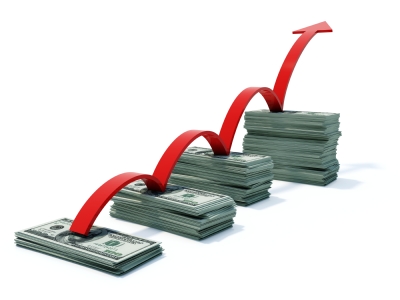To know if a company is doing well in that industry, we can look at various metrics and financial ratios to give us a clearer view. This will give us a confirmation that it has a strong economic moat.
How to know if a company is generating profits?
Financial statements are important in our analysis of a company. It reports on the current health of the company such as how much revenue it is generating, how much money it is spending, how much debt it has, how much cash it has etc.
There are basically 3 types of financial statements we see in a company’s financial report namely:
1) The income statement
2) The Balance Sheet
3) The Cash flow Statement
We’ll discuss in depth the above 3 statements in a separate blog post. For now, we’ll just touch on a few simple financial terms to start with.
(*The 3 financial statements are available for read now. Click on the individual link above to go directly to the blog post)
Free Cash Flow
To evaluate a company’s profitability, first we look at free cash flow. This is calculated by using cash flow from operations minus capital expenditures.
Free Cash Flow (FCF) = CF from operations – Capital expenditure (Capex)
Net Margins
Net margins is simply net income as a percentage of sales (revenue).
Net Margins=[(Net Income)/Revenue] x 100%
This shows us how much profit the firm can keep after deducting all the necessary expenditures. The net income and sales figures can be found in a company’s income statement. For example, if a firm has $50k in sales or revenue and net profit of $10k, we can say that this firm has a net margin of 20%. Firms that can generate more than 15% net margins are generally alright.
Return on Equity
Return on Equity (ROE) is net income as a percentage of shareholder’s equity. It measures how much profit per dollar the company is generating from the capital that shareholder’s have invested in. Firms that post a ROE of above 15% consistently are generating returns on shareholder’s money which means they are likely to have an economic moat.
Return on Assets
Return on Assets (ROA) is net income as a percentage of a firm’s assets. It measures how efficient the firm is in generating profits from its assets. If a firm can generate a ROA of 6-7% consistently, it may have some competitive advantage over its peers. ROE and ROA have already been calculated in percentages on most financial websites such as Bloomberg. You can use this website to view financial statements of companies and also the various financial ratios like ROE and ROA: http://investing.businessweek.com/research/company/overview/overview.asp
Conclusion
What we've just discussed are just some simple ways we can evaluate a company’s profitability. It is important to look at the metrics comparing for a few years. If a company can consistently have good FCF, decent net margins, high ROE and ROA, then it has a stronger economic moat and can keep competitors away for an extended period of time. These are only just a guide for us when picking stocks.
There are many other ways to analyse a company and I will discuss it in subsequent blog posts. It is also important to compare companies against other companies in the same industry to see if it is truly ahead of competition.
In the next series, I will write on how to interpret the various financial statements. We'll also look at how to know if a company is worth buying at that current price by valuing the true value of the company against its stock price. Stay tune for more!
Subscribe to my blog to receive new updates of blog post by email. Click here to subscribe: Subscribe to SG Young Investment by Email
Like this post? Share it with your friends through facebook, email, twitter and google+ by using the share buttons below.
Related Posts:
1. How to pick stocks (Part 1) - Economic Moats
2. Investing Basics - Low Cost Index Fund investing (Passive Investing)

hi
ReplyDeletei have buying yongnam at a high price.
Do you think i should continue accumulate or sell it all as it keep dropping now ?
Hi ken ken,
ReplyDeleteI would think yongnam is a good company. The recent weakness is due to its previous quarter earnings not meeting expectations. However, I think this is only a temporary weakness as its fundamental business is still strong. The market may have overreacted too much. I have accumulated recently at a low price.
This is just my view. It could turn out otherwise and I won't know. :)
Your thoughts on investing in waste disposal/recycling companies? I'm referring to 800 Super to be exact.
ReplyDeleteHi anonymous,
DeleteTo be honest, I have no idea if investing in this company will be a good choice. I've taken a look on the financials of 800 super. Profits has been consistent, debts are low and cash flow is healthy. The PE ratio is at the lower end also thus it seems like to good company with potential upside.
The only thing is I do not know who are its clients and need to find out any competitors which will affect the company's profit. The company website is currently under maintenence so I couldn't get more information on its business itself. You may want to find out more about this company before investing in it.